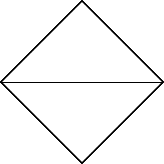Rotation and Spin
In developing the new physics at the LRC, we first assume that the fundamental reality of the physical universe is nothing but motion, or the reciprocal relation between space and time. Then we identify the kinds of motion that exist in the universe of motion. Happily, we discover that these possible types of motion are determined mathematically, simply from the properties of numbers, where the three dimensions of observed magnitudes (four, counting zero) are shown to emerge from the dimensions of numbers 1 through 4.
Because we further assume that the constituent motions of the universe exist in three dimensions and in discrete units, a significant insight into the nature of higher dimensional numbers permits us to reconcile them with the three (four) dimensions of physical magnitudes. This new insight, based on the Bott periodicity theorem, shows how higher dimensions of numbers are actually related to greater scales of three (four) dimensions of magnitude, not extra geometric dimensions. This is a great help in dealing with higher dimensions.
Before M3 and M4 motion were recognized, as legitimate forms of motion, separate and distinct from M2 motion (see: the chart of motion discussions in previous posts below and in the New Math blog), it was not possible to correctly understand the simple mathematics of higher dimensional magnitudes. As a result, the erroneous concept of higher dimensions of space was employed in the LST development to develop higher dimensions of magnitude, in abstract “spaces” of logic, using complex numbers and the concepts of rotation, spin, and isospin.
In retrospect, however, we can now see that this approach amounts to an ingenious, if unnatural, adaptation of the principles of M2 motion to the proper domains of M3 and M4 motion. Rotational motion is conspicuous by its absence in the Chart of Motion (CM), where all motion has only two modes, bounded or unbounded. Unbounded motion is unidirectional, while bounded motion involves a change in “direction.” The “direction” of motion is defined in the CM by the “bidirectional” property of operationally interpreted (OI), reciprocal, numbers: The reciprocal OI number, of a given OI number, is a value on the other side of unity, in the opposite “direction” of increasing value, with respect to one (1/1).
However, in the M2, change of position, motion, a change of direction is possible that is analogous to the change in “direction” of the bounded motion of the CM, but this M2 change of direction motion is not a change of “direction,” because it is not a change relative to unit, or 1/1, magnitude, but rather it is a change relative to a zero, or initial, position. This is a significant distinction, permitting us to clearly see that M2 vibrational motion is “bounded” only in one dimension, and, as a result, the rotational version of it can be summed to two and three dimensions, as separate instances added together.
Thus, one complex number can represent one-dimensional magnitude, as in U(1) Lie groups, and two complex numbers can represent two-dimensional magnitude, as in SU(2) Lie groups. With some difficulty, this adaptation can be further extended to three-dimensional magnitudes as well, as in the SU(3) Lie groups.
Yet, the fact that these three Lie groups provide successful LST physical theories for the electroweak force (U(1) & SU(2)), and for the strong nuclear force (SU(3)), based on concepts of rotation and spin and isospin, doesn’t mean that RST physical theory can’t be even more successful, without resorting to the unnatural concept of rotation and complex numbers. Certainly, it remains to be seen, but the implication of the CM is that M2 motion has been inappropriately applied, in LST physics, to develop concepts of n-dimensional magnitudes that are more appropriately understood in terms of M3 and/or M4 motion.
Without the benefit of the Reciprocal System of Mathematics (RSM), Larson too turned to the concept of rotational motion, in a similar attempt to adapt it to the development of n-dimensional scalar magnitudes, albeit without incorporating the use of complex numbers and Lie groups. He identified four types of motion in the universe of motion:
- Translational
- Vibrational
- Rotational
- Rotational vibration
Although these four types of motion clearly apply to M2, or vectorial, motion, Larson’s idea was to apply them to concepts of scalar motion as well. This enabled him to add a “2D rotation” to a 1D vibration, for instance, rotating the vibration in two dimensions simultaneously, which he was careful to insist is not two, one-dimensional, rotations, but rather one, two-dimensional, rotation; that is to say, unlike the initial 1D vibration, the rotation of the vibration is a two-dimensional magnitude. Subsequently, Larson obtained a three-dimensional magnitude by applying a second, optional, rotation of the rotating vibration. This approach too is very successful, as far as it has been applied, to developing physical theory.
However, again, it is clear to see that the use of rotation, as an M2 adaptation for obtaining two and three-dimensional magnitudes of motion, while it may work to some degree, is, in all actuality, an inappropriate application of change of position motion, which is strictly confined to the domain of one-dimensional magnitudes of motion. However, the fact that two and three-dimensional magnitudes of geometric space can be defined, using separate instances of M2 motion, doesn’t mean that it should be adapted to define the true n-dimensional magnitudes of motion. At least that’s the implication of the CM.
Probably the most convincing evidence of the unnatural application of the rotation concept is the enigma of the quantum mechanical “spin” concept, and its indispensable role in quantum theory. Today, this concept plays a central and crucial role in physical theory, but after almost three quarters of a century, since its appearance, it is just as enigmatic as ever. Nobody can explain it, even though its effects have become more and more important in recent years, as significant and unexpected results have moved “spin studies” to the forefront of high-energy physics. Indeed, the most recent data from the accelerators clearly indicate that high-energy interactions essentially depend on spin degrees of freedom.
With the advent of “spintronics,” in which electron spin states are exploited to carry information, many people think particle spin must be clearly understood, and it’s true that the so-called “spin space,” as a quantum mechanical degree of freedom, is very much a real space, but, yet, the rotation of the spin axis of a spin-1/2 particle doesn’t follow the ordinary rules of rotation in three geometric dimensions. Instead, these rotations follow the rules of the SU(2) group, which operates with a different sort of space, a space in which a rotation of 360 degrees does not constitute a complete revolution, yet a 180 degree rotation, in an orthogonal dimension, definitely does reverse its spin axis.
Hence, while there is no doubt that the spins of particles are measurable quantities that play a fundamental and indispensable role in nature, the concept of a particle with no spatial extent, a point particle, can’t be regarded as possessing angular momentum, and the axis about which it spins can’t be regarded as rotating through 720 degrees to return the particle to its original state, but, nevertheless, that’s what we’re forced to believe. Indeed, LST physicists don’t have a clue as to how to find a way out of this embarrassing predicament.
However, understanding that adapting M2 motion, via rotation, to generate n-dimensional magnitudes that are described more appropriately by M3/M4 motion, is probably not the best way to proceed, in developing physical theory, liberates us to explore the development of a new approach, based on the newly identified types of motion. Recall that, unlike M2 motion, M3 motion defines magnitudes by a change of interval, not a change of position and that M4 motion defines magnitudes by a change of scale. What this means is that M3 motion expands, or contracts, an interval between two or more points, so that the length of a line is transformed to a point, or the area of a surface is transformed to a line, through expansion/contraction, defining a magnitude of motion. An example of this type of motion can be found in the transformation of a 2D rectangle into a 1D line, illustrated in figure 1 below:

Figure 1. M3 Motion
In the motion of the rectangle in figure 1, the angle at each of the four corners is 90 degrees, or 4 * 90 = 360 degrees total for the rectangle, as a whole. If each of the four corners were hinged, pressing the top and bottom vertices together would merge all four sides into one line, collapsing the interior angles of the two horizontal vertices from 90 degrees to 0 degrees and expanding the interior angles of the two vertical vertices from 90 degrees to 180 degrees, for a total angle rotation of 360 degrees. Subsequently, pulling the top and bottom vertices apart, expanding the collapsed line back to its original diamond shape again, rotates the interior angles a total of 360 degrees once more, but in the reverse direction. Hence, the total angle rotation, which constitutes one cycle of contracting/expanding the diamond, is clearly 720 degrees.

Figure 2. Equivalent 2D M3 Motion in 3D M4 Motion
In a similar manner, expanding a 0D point, which by definition has no spatial extent, to a 2D circle, the spatial extent of which is measured as 360 degrees of rotation, is equivalent to a rotation from 0 to 360 degrees, while the contraction of a circle to a non-spatial, 0D point, is equivalent to a rotation from 360 to 0 degrees, or a total of 720 degrees rotation in one cycle of expansion/contraction. In the case of the rectangle, with well-defined vertices, or poles, the inversion of the poles, represented by a 180 degree rotation of the rectangle, is equivalent to “flipping” the spin axis of a corresponding rotation.
Thus, recognizing the existence of M3 and M4 motion permits us to make sense of the reality of “spin” magnitudes in a straightforward and unmysterious manner that is clearly physical, yet unrelated to the angular momentum concept of M2 motion. Since an expanding sphere contains an infinitude of expanding lines and expanding planes, M3 motion is contained in M4 motion. The consequences of this fact have important implications in the development of the new physics.
Reader Comments